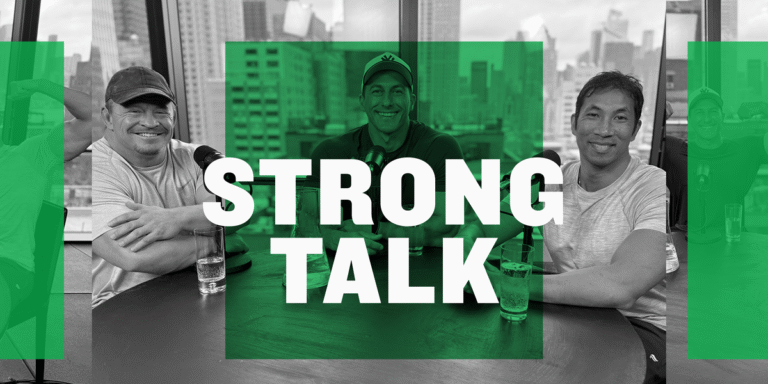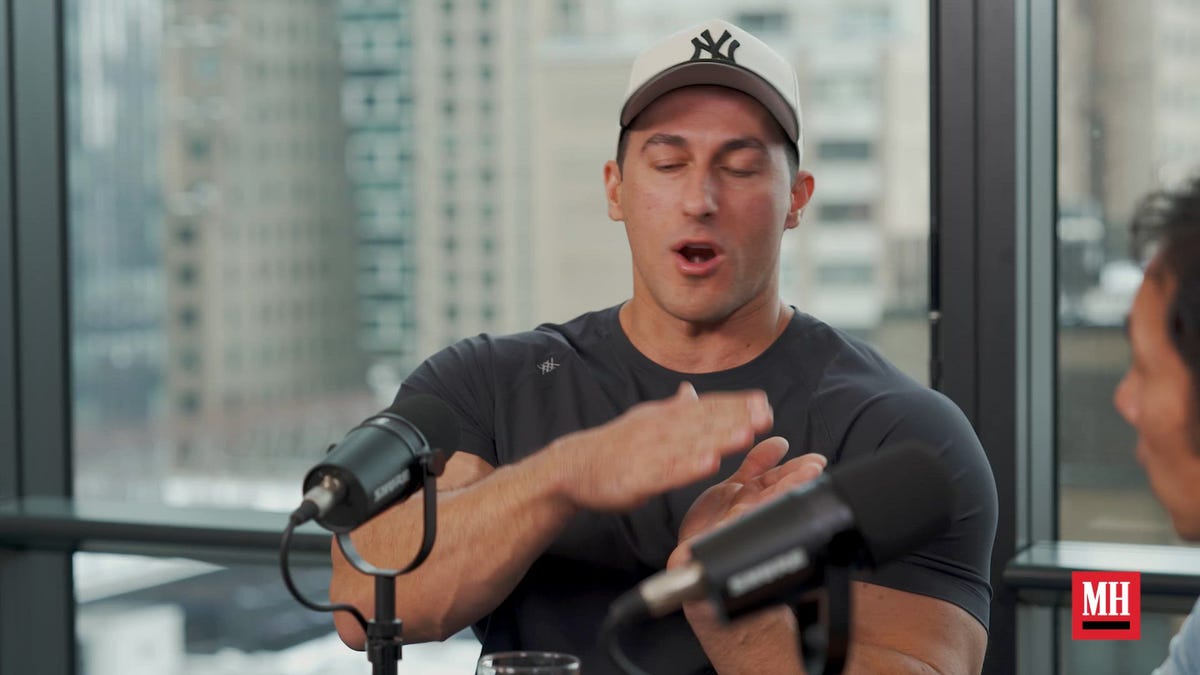WHAT ACTUALLY GOES into building muscle? The topic has been discussed endlessly at weight racks, in online forums, and in the pages of magazines from the earliest days of fitness culture. You might think you know everything about getting swole, but the actual process of “hypertrophy” (how your body builds muscle), the optimal rep ranges for growth, and the best ways to use advanced techniques like dropsets and tempo training are often misunderstood and misused. Not growing? You very well may be relying on muscle myths or building your workouts around outdated practices.
Men’s Health fitness director Ebenezer Samuel, C.S.C.S. wants to break through the online BS and old school fallacies to explore the nitty gritty behind the modern science of building muscle—but he can’t do it alone. Joining him for the discussion are Sadik Hadzovic, IFBB Pro bodybuilder and 2015 Arnold Bodybuilding Classic Physique division winner, and Dr. Pat Davidson, an exercise physiologist and strength and conditioning coach who is also a bodybuilder. This is Strong Talk, the MH program that brings a group of high-level trainers together to explore, debate, and explain the most pressing topics in fitness.
The trio get down into the dirty details here—including the myth about “damaging” muscle, the type of meal plan you actually need in your training to achieve this type of goal, and why this is such a popular topic for the strength and conditioning community to debate.
SOME HIGHLIGHTS FROM THE STRONG TALK VIDEO
The Myth of “Damaging” Muscle to Build Back Up
EBENEZER SAMUEL: That’s kind of that oversimplified thing where everybody says you basically ripped muscles or you tore muscles, quote unquote. And then you rebuild.
PAT DAVIDSON: That’s totally wrong. If you are damaging muscle, you now have to repair that muscle, and the energy used to repair the muscle is not energy going into growing the muscle. You need to threaten the muscle—an environment that’s threatening, a.k.a. lifting heavy weights and doing it a bunch of times—but actually damaging the tissue is fairly counterproductive to growing the tissue.
ES: Threatening muscle. I think that’s a really good and different way to put it that I haven’t heard before. So what you’re doing when you go into the gym to train is essentially you’re trying to threaten the muscle. And what are some of the ways that you think about doing that when you go through a workout?
SADIK HADZOVIC: Pat that’s phenomenal. Dude, I wish I had you as a training partner when I was putting on muscle myself. Who knows? I may have been twice the size. I’ve always told myself not to overcomplicate things because a gym can be kind of otherworldly when you’re first joining a gym or in the pursuit of building muscle. I was a scrawny, 130-pound weakling. I really wanted to focus just on eating enough, training hard enough, and rest and recovery. So that was a little digestible piece that I could chew and absorb and understand. I did that for many years. But I like that “not to threaten the muscle.” Lee Haney had an analogy: Stimulate, don’t annihilate. That’s kind of like what I think about. Don’t tear the muscle, but just threaten it a little bit.
How Important Having Fun Is for Building Muscle
PD: Growing muscle tissue has a huge window for available options and menu to get the job done. But I think that there’s a bit of, Do you want to take the highway or do you want to take the scenic route? You can look at different kinds of athletes, like gymnasts for instance, very muscular individuals. Is this the highway or the the scenic route? It’s probably the scenic route. I’m not going to recommend to most people to start doing rings and parallel bars and the pommel horse because gymnasts are super muscular. It could work—but it would be a lot easier if you use barbells and machines and dumbbells and did basic compound movements that are generally agreed upon: Push pull, squat, hinge. Same with the mechanics of resistance. You can hip thrust, which is generally a short partial movement that’s overloaded in the short position for the glutes—it can work okay. Or you can hinge, and that’s going to be a lengthened position for the glutes with heaviest in the in the lengthened part. I think that you can add up enough hip thrusts to get you to the point where it equals the same results as you’d get from hinging. It’s like trying to get to $100 with nickels versus 20s. We’re going to get to the same end point. It’s just what’s your rate and what’s the magnitude of each input.
SH: Or your mental fortitude, because doing a hip thrust is way easier than hinging. So we’ve got to keep it fun. I look at the gym as therapy. My goal isn’t just to be like, all right, I got to win the Olympia, I got to win the Arnold, or the New York Pro—I’ve just done those things because I enjoyed what I’ve been doing. I’ve been able to outlast people, making incremental improvements for year after year. Sometimes if you’re doing such a strict program, you’re more likely to give up. If I push my clients too hard, they’ll give up. If the program’s too hard, they’ll give up. If the meal plan is too structured, they’ll give up. There has to be kind of a light at the end of a tunnel or a reward or something. They actually look forward to, whether it’s a cheap meal, a deload week, picking your favorite exercise—make it fun. I truly believe that. But scientifically speaking there are exercises that resemble 20s rather and nickels.
Finished watching Strong Talk? Click here to dive into the rest of our muscle-building program!
Read the full article here



